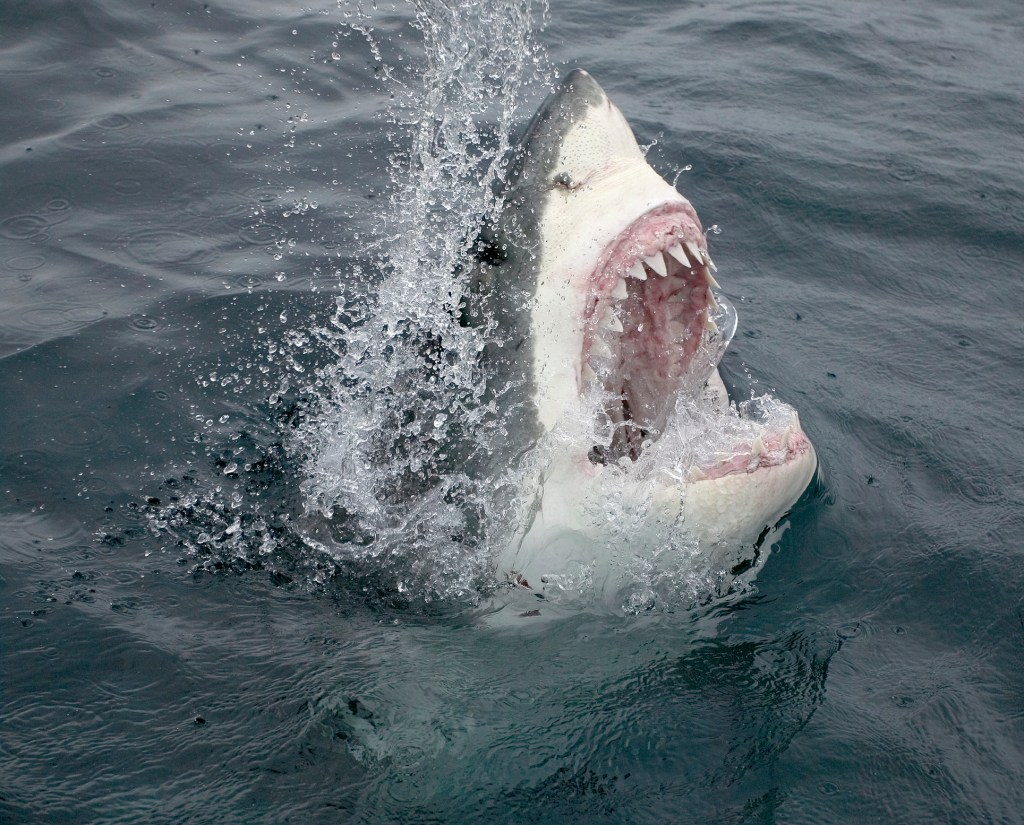How violent, really, is shark sex? It’s so vicious that to many shark scientists, it’s taboo. Researchers fear that talking about it, writes Juliet Eilperin in Demon Fish: Travels through the Hidden World of Sharks, would only “reinforce the popular perception that these creatures are brutish and unrelenting.”
Safe to say that Eilperin’s book went to press before Americans—libidos liberated by their Kindles and E.L. James’s scintillating trilogy — realized that nothing turns them on more than the brutish and unrelenting. If shark researchers really want to change our perception of the shark and make them more relatable, maybe they should play up the hot nights of the great white and not stop until all the world knows how the mako makes love.
Videos by VICE
Because, baby, the jaws ain’t the half of it.
For starters, let’s just say that the male shark doesn’t “need a bigger boat” if you know what I mean. Back under their pelvic fins, male sharks have not one but two claspers, essentially penis analogs. Only one of which is used at a time, but the potential is still there for all sorts of mischief and blue humor with these sperm delivery devices. The female has a cloacal opening, much like reptiles and birds, between her pelvic fins.
While shark anatomy is easy enough to figure out, their life cycles are still mostly a mystery. At the London Review of Books, Theo Tait notes that we still aren’t really sure how long sharks live and only recently figured out how female sharks kept away from males will still sometimes give birth. Thus the mating rituals of many shark species remain hazy. However, if we humans can speculate on how long-gone dinosaurs got freaky, still-alive-if-often-pretty-endangered sharks should be a piece of cake, right? Anyway, scientists have seen some stuff, believe me.
Marine biology devotees and perverts will recall that sharks have to keep swimming or they’ll die, so one can already see that taking the clasper to the cloaca will be a kinetic, if not athletic feat. One article mentioned sexy nurse sharks exhibiting “thrashing, barrel rolls, headstands,” and other wildness that having a skeleton made of cartilage rather than bone affords.
The downside is probably the small shark bites that the male inflicts, followed by the harsh grip on the female’s pectoral fin (sharks are just like us, sort of). Researchers speculate that female sharks might be developing thicker skin to combat the wounds left by these cartilage’d Casanovas. The male shark then inserts one of his claspers, the tip of which unfolds and anchors itself inside with one or more clasper spurs.
Another downside is that while this happens, other male sharks tend to be waiting around to take their shot at one the female’s two uteruses. In some cases the coupled pair drops to the bottom of the ocean and relies on the water’s current to provide them both with enough oxygen to live, which is kind of like erotic asphyxiation except that the waiting male sharks will take advantage of the female’s weakened state to make their move, which actually sounds a lot more like date rape.

For better or worse, it doesn’t last very long: each of the two to seven fathers takes just over a minute.
Covered in bites and bleeding, the mother shark will either lay the eggs at the bottom of the ocean in a sac that is charmingly referred to as a “mermaid’s purse” or more frequently they’ll carry the fertilized eggs until the pups (aw!) hatch and emerge, sometimes after eating all their little brothers and sisters in utero (aw, man!).
A horn shark’s screwy egg case anchors into the rocks (Photo: D.J. Eernisse_c_2002 via NOAA’s website).
Recent years and advances in technology have allowed researchers to get money shots beyond their wildest dreams. Unfortunately, one of the first things they learned was that shark mating takes place deeper than they thought, but the interesting thing is that they learned this by attaching accelerometers, like the kind that are found in iPods and Wii controllers, to sharks, in order to track not just where they move, but how they move. Even when scientists can’t see it, they now know when and where it happens.
So there you have it: some barbed penetration, near drowning, uterine cannibalism and copious amounts of biting. If that doesn’t get you hot and bothered, maybe it just gets you bothered. Sure, some killjoy scientists think all this bloody sex will reinforce negative stereotypes about sharks. Don’t judge, though; for sharks it’s been a proven technique for 150 million years.



